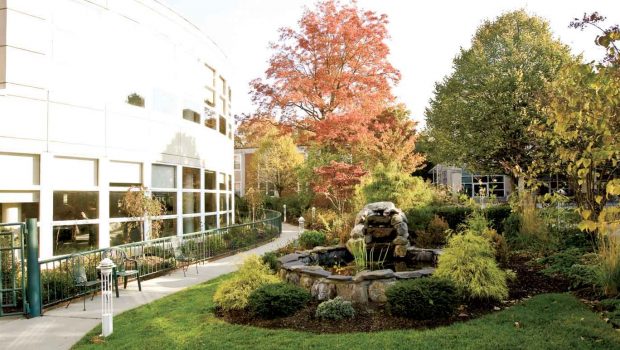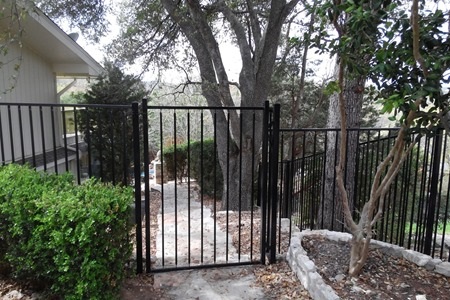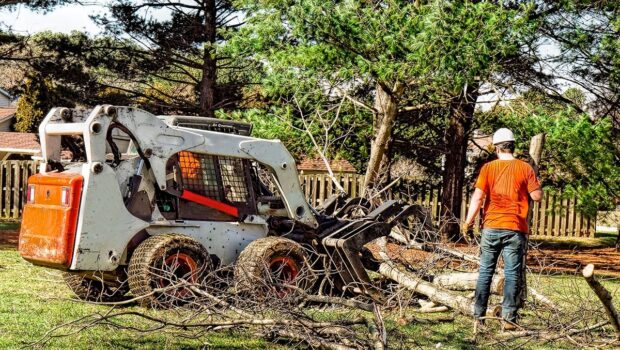“Healing gardens” is a term used to describe green spaces in healthcare facilities that are designed to enhance the well-being of patients and guests.
A seasoned Murray, Utah lawn care professional explains why having a garden may be beneficial for your hospital, and also shares tips on how you can integrate this type of therapeutic space to your medical and healthcare facility.
Benefits of a hospital garden
It is not uncommon to find a person who feels uncomfortable or totally afraid of stepping into a hospital. One is mainly due to its design.
Hospitals appear cold and sterile. The white interiors coupled with tiled floors and the permeating smell of bleach and alcohol are what make such spaces feel uncomfortable.
A hospital garden, on the other hand, provides patients and visitors a space to get away from the sterile hospital environment.
Studies indicate that a properly designed garden can make people feel calm, relaxed, safe and secure. It takes them away from the cold environment of the hospital rooms and the reality of being sick or being around sick people all the time.
For some people, staying in a garden gives them perspective. Looking intently at the greenery induces a form of self-reflection. It allows them to see the positive things, and remember aspects of their lives that they should be thankful for.
Visiting or staying in a garden is not a cure for cancer nor should it be used to replace any form of medical treatment. However, it can be used to support the treatment a patient is receiving.
Patients report feeling better, faster when they are in a garden. A visit to the garden allows them to release some of the stress and negative experiences associated with being in a hospital, especially if they have been in one for an extended period of time.
Designing a hospital garden
1. Create a safe space
Much like any other property, borders such as fences can make the space feel more secure. Trees, hedges and other tall plant life are potential alternatives to fences. The greenery can make the place feel safe without appearing cramped.
Find ways to keep external noise away from the garden. This includes noises from the city and the hospital itself such as running machines or air conditioning units.
Keep in mind that not all people smoke, are indifferent to the smell of smoke, or are allowed to inhale secondhand smoke. If you need to provide a smoking area outdoors, make sure that the smoking area is placed some distance away from the garden.
2. Stimulate the senses
Your hospital garden should have more plants than paved or cemented areas. Studies indicate that a ratio of 7:3 between plants and hard surfaces is highly advisable.
Be careful when it comes to choosing what to include in the hospital garden. As much as possible, do not install any sculpture or artwork inside the garden. In some cases, patients may see or interpret artwork negatively since art is subjective.
Include different varieties of blooming flowers, fruit trees and shrubs. The combination of various flora can affect individual patient experience in the garden.
Plants are not the only way of exciting the human senses. Without resorting to art pieces, you can add fountains or a water feature such as a man-made pond with fishes. The sound of running water plus seeing fishes swimming can induce calm and relaxation.
3. Consider different user groups
Unless the garden is built for a specific group of people, you will need to consider the needs of different types of people.
For instance, wheelchair-bound patients will require smooth, paved pathways to get around. Benches can provide patients and guests with areas where they can sit, talk and relax.
Time to install a healing garden
Hospitals need their own gardens.
A garden is a place where patients, guests and even staff can relax and feel secure. Plus, gardens are already known to help patients heal faster so they are a complementary factor in patient recovery.
Once you are ready to build your hospital garden, ensure you get professionals onboard to work with you.
Consult a local expert to know what plant options are available or get additional ideas for your hospital garden. For instance, you can hire a landscaping expert in Murray, Utah to know what plants are recommended in your specific area, and what design would work best for your space.





